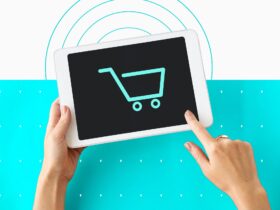Black Friday 2023 is the day after Thanksgiving in the United States when retailers offer huge discounts and deals on a variety of products. It is one of the most anticipated and profitable shopping events of the year, both for consumers and businesses. In 2022, Black Friday online sales reached a record $9 billion, up 21.6% from the previous year.
But what can we expect from Black Friday 2023? How can you get ready for this massive opportunity to save money and boost your sales? In this article, we will share some tips and trends to help you plan ahead and make the most of Black Friday 2023.
When is Black Friday 2023?
Black Friday 2023 will fall on Friday, November 24, 2023. However, the deals and promotions will not be limited to that single day. Many retailers will start offering discounts and specials as early as the beginning of November, and extend them until the end of the month or even beyond. This is known as the Black Friday Week or the Black Friday Month.
Some of the key dates to mark on your calendar are:
- November 1, 2023: The start of Black Friday Month, when some retailers will launch their early bird offers and pre-Black Friday deals.
- November 17, 2023: The start of Black Friday Week, when the majority of retailers will join the frenzy and ramp up their offers and discounts.
- November 23, 2023: Thanksgiving Day, when some retailers will open their doors for in-store shopping and offer exclusive deals online.
- November 24, 2023: Black Friday, the main event of the shopping season, when the best deals and the highest demand will occur.
- November 25, 2023: Black Friday Weekend, when the sales will continue and some retailers will offer additional discounts and incentives.
- November 27, 2023: Cyber Monday, the online counterpart of Black Friday, when online sales will peak and some retailers will offer new or exclusive deals.
- November 28, 2023: Giving Tuesday, a global movement that encourages people to donate to charities and causes after the shopping spree.
What are the Black Friday 2023 trends?
Black Friday 2023 will be influenced by several factors, such as the ongoing COVID-19 pandemic, consumer behavior changes, technological innovations, and the competitive landscape. Here are some of the trends that we expect to see on Black Friday 2023:
- Increased online shopping: The pandemic has accelerated the shift to e-commerce, as more consumers prefer to shop online rather than in crowded stores. According to a survey by Adobe, 63% of consumers said they will shop more online and less in-store this year. Online shopping also offers more convenience, variety, and safety for shoppers. Therefore, we expect online sales to grow even more in Black Friday 2023, and retailers to invest more in their digital channels and platforms.
- More fulfillment options: Online shoppers will also demand more options and flexibility in how they receive their orders. Besides the standard delivery, consumers will look for alternatives such as curbside pickup, in-store pickup, lockers, or same-day delivery. These options can help shoppers save time, money, and hassle, as well as reduce the environmental impact of shipping. Retailers will need to offer these options and ensure they are fast, reliable, and convenient for their customers.
- A younger demographic: Black Friday is not only for older generations. In fact, younger consumers are more likely to shop during Black Friday than older ones. According to a survey by PwC, 72% of Gen Z and 67% of Millennials plan to shop during Black Friday, compared to 60% of Gen X and 40% of Boomers. Younger consumers are also more influenced by social media, influencers, and reviews, and more interested in sustainability, diversity, and social causes. Retailers will need to cater to these preferences and values and use the right channels and messages to reach and engage this demographic.
- Early access campaigns: Black Friday is no longer a one-day event, but a month-long phenomenon. This means that consumers will have more time and opportunities to shop, but also more choices and information to consider. To stand out from the crowd and capture the attention and loyalty of shoppers, retailers will need to offer early access campaigns for their VIPs and loyal customers. These campaigns can include exclusive deals, previews, rewards, or perks, that can entice shoppers to buy from them before or during Black Friday.
- Omnichannel is still critical: Even though online shopping will dominate Black Friday 2023, physical stores will still play a role in the shopping journey. Some consumers will still prefer to shop in-store or use a combination of online and offline channels, such as browsing online and buying in-store, or vice versa. Retailers will need to provide a seamless and consistent experience across all their channels and ensure they are integrated and synchronized. For example, retailers can use online channels to drive traffic to their stores or use their stores as fulfillment centers for online orders.
- Hybrid shopping is gaining popularity: Another trend that will emerge in Black Friday 2023 is hybrid shopping, which is a mix of online and offline shopping. Hybrid shopping can take different forms, such as live-streaming, virtual reality, augmented reality, or social commerce. These technologies can help shoppers to interact with products, brands, and other shoppers in real-time, and create a more immersive and engaging shopping experience. Retailers will need to adopt and leverage these technologies to enhance their online offerings and differentiate themselves from their competitors.
- Heightened digital expectations: As online shopping becomes more prevalent and sophisticated, consumers will also have higher expectations and demands from their online shopping experience. They will expect fast, easy, and secure transactions, personalized recommendations, relevant content, and excellent customer service. They will also expect more transparency and accountability from retailers, especially regarding their data privacy, product quality, and social responsibility. Retailers will need to meet and exceed these expectations and use data and analytics to optimize and improve their online performance and customer satisfaction.
- Mobile shopping continues its upward trend: Mobile devices will continue to be the preferred device for online shopping, especially among younger consumers. According to Adobe, mobile devices accounted for 40% of online sales and 58% of online traffic in Black Friday 2022. Mobile devices offer more convenience, accessibility, and functionality for shoppers, as they can shop anytime, anywhere, and with any app. Retailers will need to optimize their websites and apps for mobile devices and ensure they are fast, responsive, and user-friendly.
How to prepare for Black Friday 2023?
Now that you know what to expect from Black Friday 2023, how can you get ready for it? Here are some tips and best practices to help you plan and execute a successful Black Friday campaign:
- Start early: Black Friday is not something you can improvise at the last minute. You need to start planning and preparing months in advance and have a clear strategy and timeline for your campaign. You also need to monitor the market and your competitors and adjust your plans accordingly.
- Do your research: Before you launch your campaign, you need to do your homework and understand your target audience, their needs, wants, and pain points, their shopping behavior and preferences, and their expectations and feedback. You also need to analyze your own performance and results and identify your strengths, weaknesses, opportunities, and threats. You can use tools such as Google Analytics, Google Trends, Google Keyword Planner, or Ahrefs to help you with your research.
- Set your goals and KPIs: You also need to have a clear vision and direction for your campaign and define your goals and key performance indicators (KPIs). Your goals should be specific, measurable, achievable, relevant, and time-bound (SMART), and aligned with your overall business objectives. Your KPIs should be quantifiable and trackable, and help you measure your progress and success. Some examples of KPIs are traffic, conversions, revenue, average order value, customer acquisition cost, return on ad spend, etc.
- Choose your keywords and optimize your content: One of the most important aspects of SEO writing is choosing the right keywords and optimizing your content for them. Keywords are the words and phrases that your potential customers use to search for your products or services online. You need to select the keywords that are relevant, popular, and profitable for your business, and use them strategically in your content. You also need to create high-quality, engaging, and informative content that answers the search intent and provides value to your audience. You can use tools such as Yoast SEO, SEMrush, or Ahrefs to help you with your keyword research and content optimization.
- Create a compelling offer and a clear call to action: Another key element of your campaign is your offer and your call to action (CTA). Your offer is what you are selling or giving to your customers, and your CTA is what you want them to do next. Your offer should be attractive, relevant, and unique, and your CTA should be clear, concise, and urgent. You should also use incentives and scarcity tactics, such as discounts, coupons, free shipping, limited-time deals, etc., to motivate your customers to act fast and buy from you.
- Promote your campaign across multiple channels: Once you have your campaign ready, you need to promote it and reach your target audience. You should use a mix of online and offline channels, such as email, social media, paid ads, SEO, influencer marketing, PR, etc., to increase your visibility and awareness, and drive traffic to your website or store. You should also use consistent and coherent branding, messaging, and design across all your channels, and tailor your content and tone to each channel and audience segment. You should also monitor and measure your campaign performance and results, and optimize and improve your campaign accordingly. You can use tools such as Google Analytics, Facebook Insights, Mailchimp, or Hootsuite to help you with your campaign promotion and analysis.
How to optimize your website for Black Friday 2023?
Your website is your online storefront, and it needs to be ready and optimized for Black Friday 2023. A well-designed, fast, and secure website can help you attract, retain, and convert more customers, and increase your sales and revenue. Here are some tips and best practices to help you optimize your website for Black Friday 2023:
- Improve your site speed and performance: Site speed and performance are crucial factors for online shopping, as they affect user experience, engagement, and conversion. According to Google, 53% of mobile users abandon a site that takes longer than 3 seconds to load. You need to ensure your site loads quickly and smoothly and can handle high traffic and demand. You can use tools such as Google PageSpeed Insights, GTmetrix, or Pingdom to test and improve your site speed and performance.
- Enhance your site security and trust: Site security and trust are also essential for online shopping, as they affect user confidence, loyalty, and retention. According to a survey by Baymard Institute, 17% of online shoppers abandon their carts due to security concerns. You need to ensure your site is secure and trustworthy and can protect your customers’ data and privacy. You can use tools such as SSL certificates, HTTPS, firewalls, encryption, etc., to enhance your site security and trust.
- Optimize your site design and layout: Site design and layout are also important for online shopping, as they affect user navigation, usability, and satisfaction. According to a survey by Adobe, 38% of online shoppers will stop engaging with a site if the layout is unattractive. You need to ensure your site is attractive, user-friendly, and responsive, and can adapt to different devices and screen sizes. You can use tools such as WordPress, Shopify, or Wix to optimize your site design and layout.
- Optimize your site content and copy: Site content and copy are also vital for online shopping, as they affect user interest, attention, and action. According to a survey by HubSpot, 55% of online shoppers will spend less than 15 seconds on a website. You need to ensure your site content and copy are relevant, engaging, and persuasive and can capture and retain your customers’ attention and interest. You can use tools such as Yoast SEO, Grammarly, or Hemingway to optimize your site content and copy.
- Optimize your site images and videos: Site images and videos are also powerful for online shopping, as they affect user perception, emotion, and decision. According to a survey by Wyzowl, 84% of online shoppers say that they have been convinced to buy a product or service by watching a brand’s video. You need to ensure your site images and videos are high-quality, appealing, and informative, and can showcase and demonstrate your products or services. You can use tools such as Canva, Unsplash, or Lumen5 to optimize your site images and videos.
- Optimize your site checkout and payment: Site checkout and payment are also critical for online shopping, as they affect user convenience, satisfaction, and conversion. According to a survey by Baymard Institute, 26% of online shoppers abandon their carts due to a long or complicated checkout process. You need to ensure your site checkout and payment are fast, easy, and secure and can offer multiple options and flexibility to your customers. You can use tools such as PayPal, Stripe, or Apple Pay to optimize your site checkout and payment.





Leave a Reply